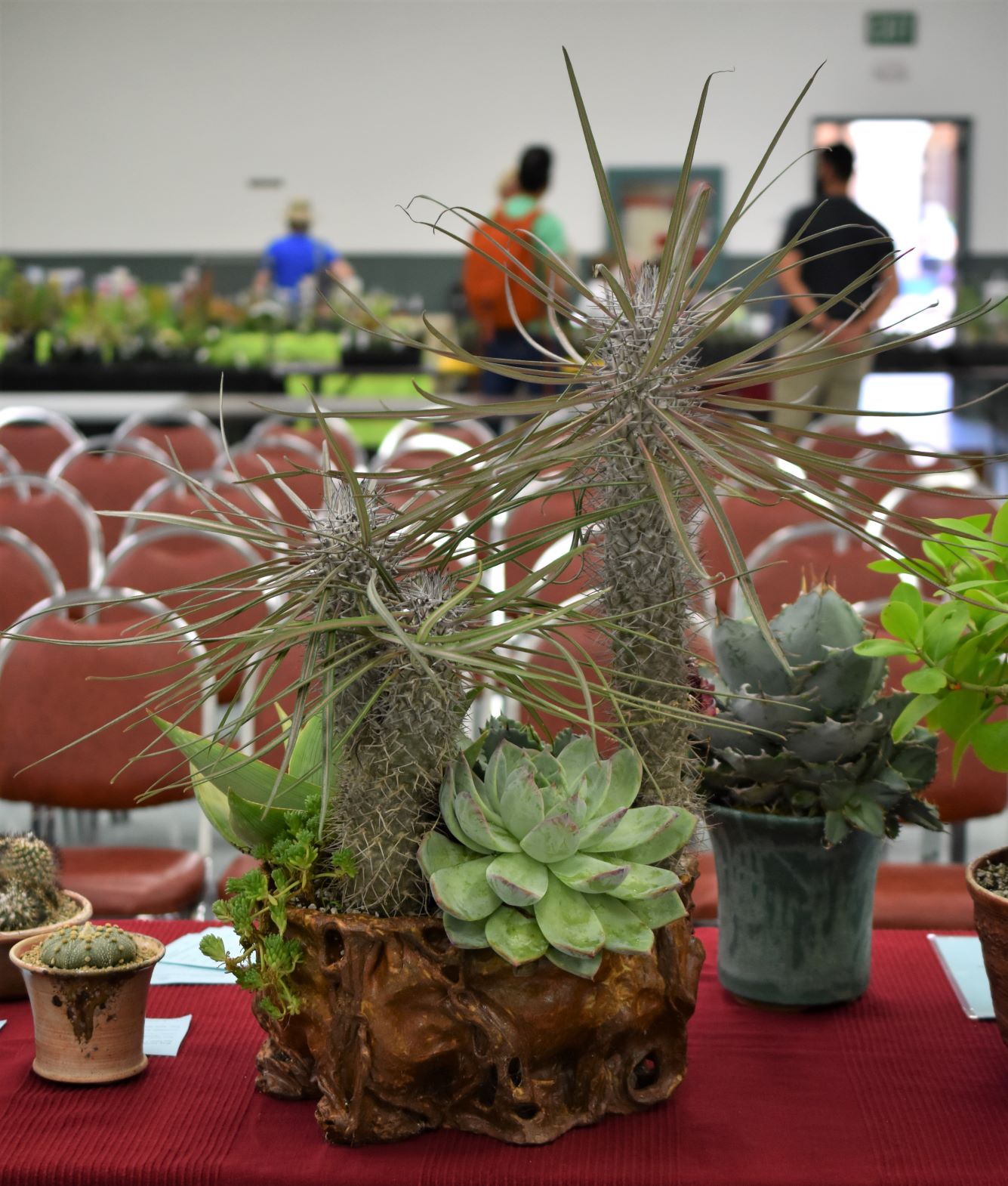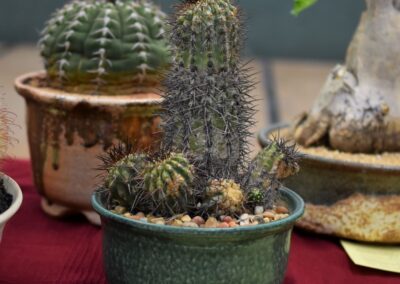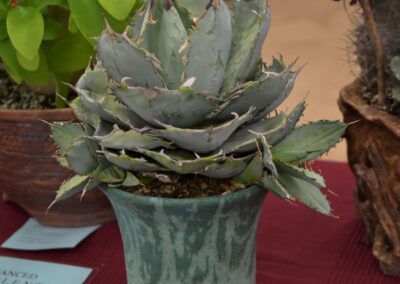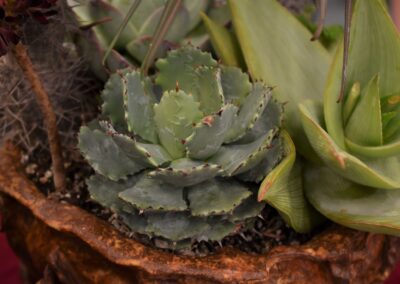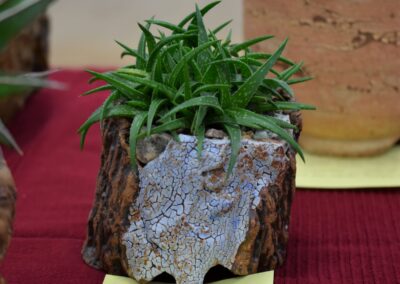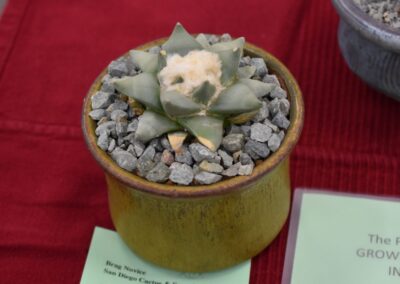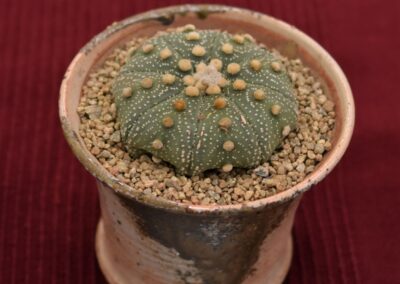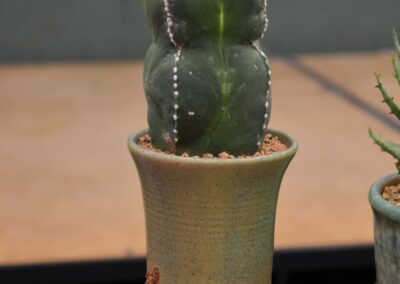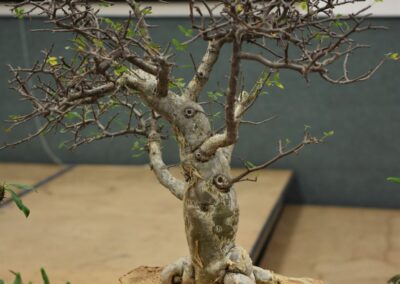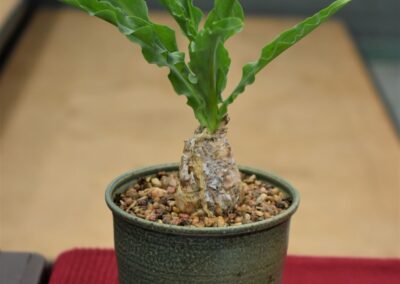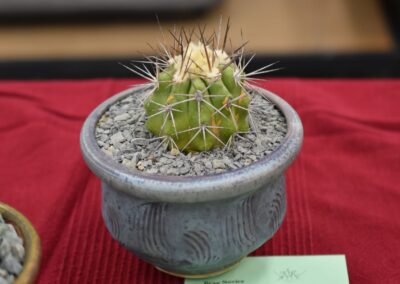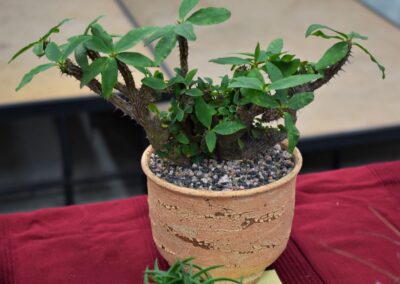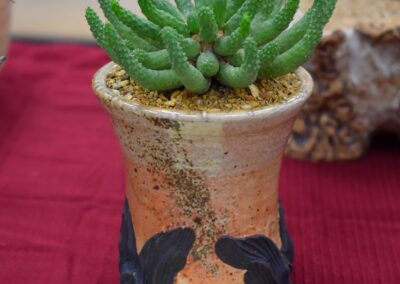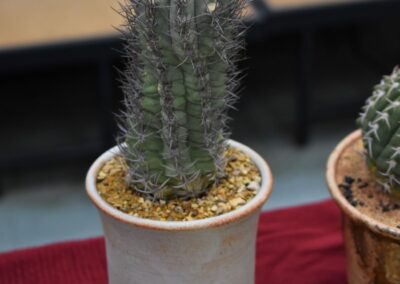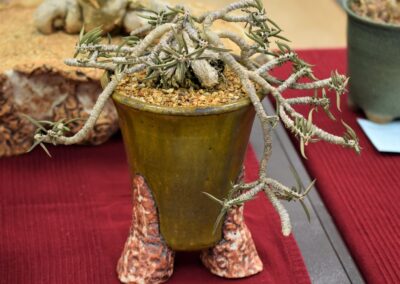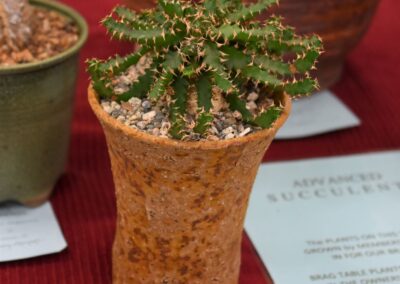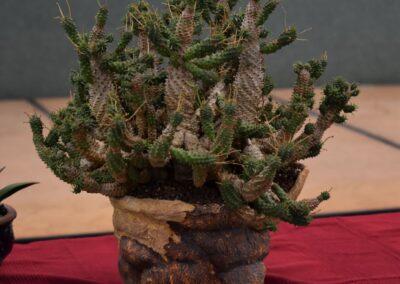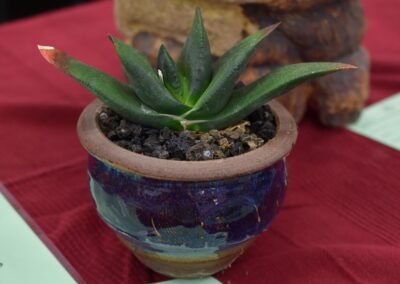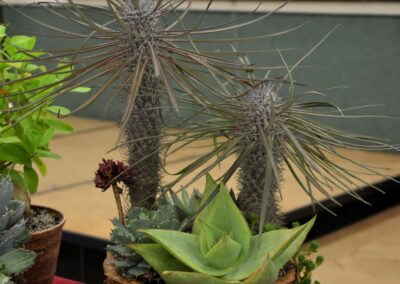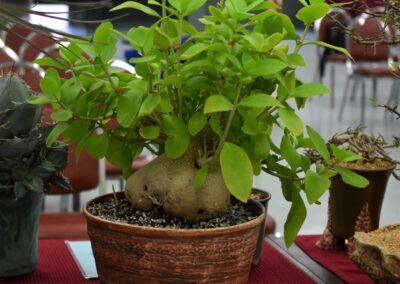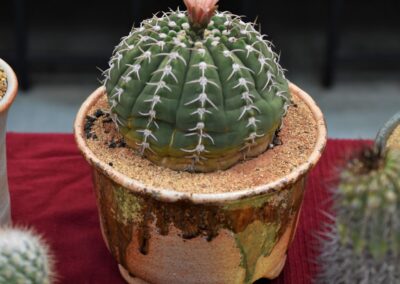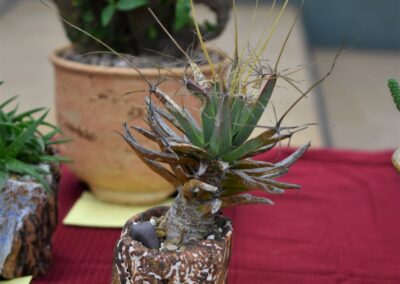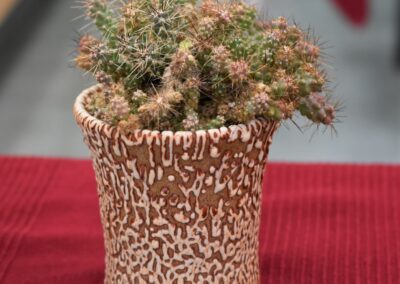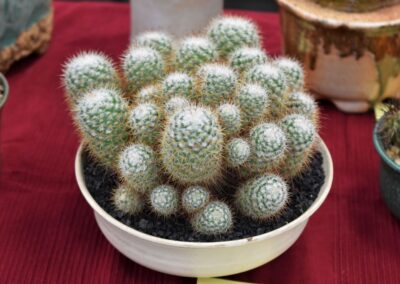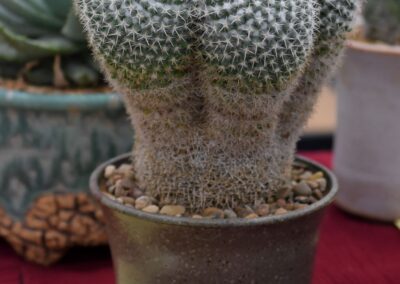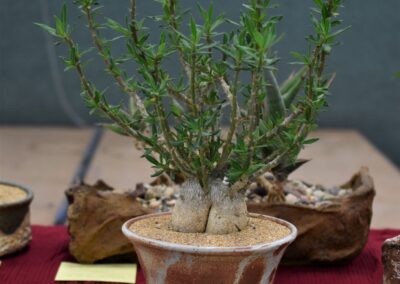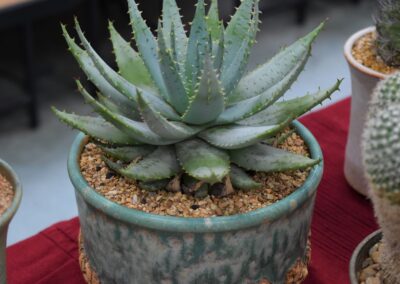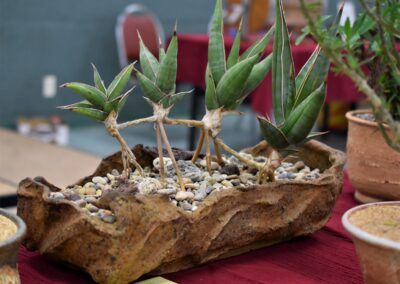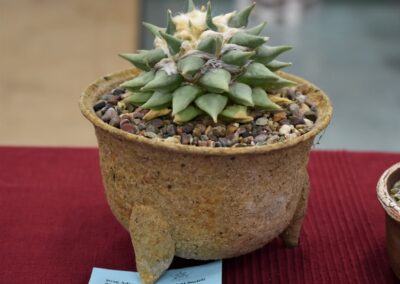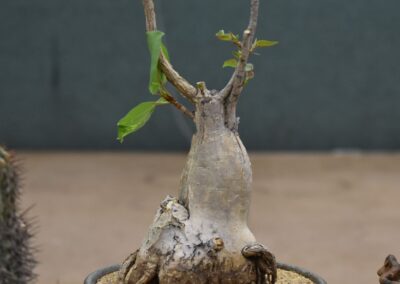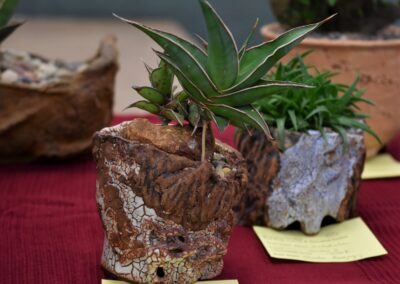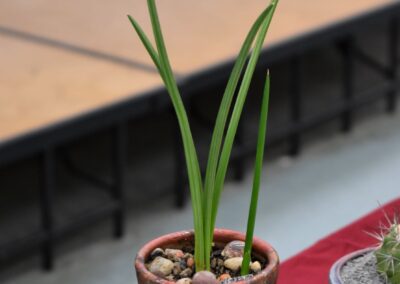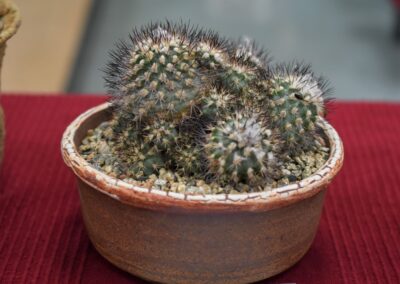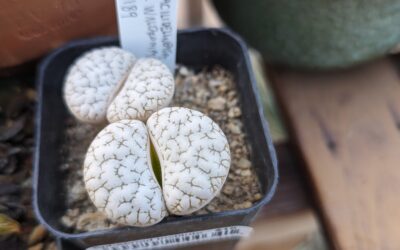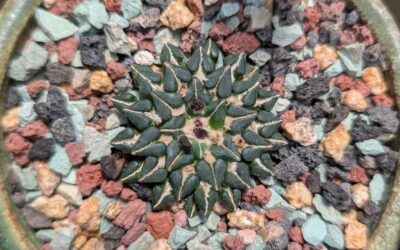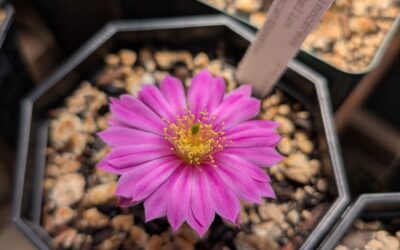After nearly two years of COVID lockdowns and social distancing, I finally made it back out to our cactus club meeting!
I’m a happy member of the San Diego Cactus and Succulent Society, and have a seat on the board of directors. The club is massive, and our board does a fantastic job ensuring that meetings are fun, informational, and always worth a trip to participate in.
Our November 13th meeting kicked off with a sale of Don Hunt pots, the last of his work after he passed away a few weeks ago. In celebration of his work and his countless contributions to the club, the brag table was themed with his pots (although no one was penalized for bringing in non-Don pots). It was amazing to see so much of his work in one place, and very cool to see how it had evolved over the years.
I wrote the Plant of the Month article and should have had a presentation to provide on the Pilosocereus azureus I’d written about, but since it had been years since I was last at a meeting – I completely forgot that was part of my commitment! Everyone was gracious about letting me pass, and it worked out in the end as the meeting was already quite long between the plant and pot sales and catchup.
Our presentation was by Ernesto Sandoval, speaking on the topic of Fertilizing Succulents and the importance of pH in their care. I’d actually already listened to this presentation a couple months ago when he gave it virtually for the Cactus and Succulent Society of America, and loved it! I’ve changed my watering and fertilization routine to reflect my learnings from that presentation, and have already seen a difference in my indoor plants as well as the faster growing plants in my greenhouse. After chatting with other members before the presentation about whether I’d seen changes in switching to acidic water, I carefully looked through my greenhouse to decide – and yes! My succulents definitely look better, particularly the Echeverias that have always given me trouble such as the Echeveria laui and Echeveria cante.
Ernesto’s presentation discussed the severe challenges we give our plants when growing them in pots, and the importance of using slightly acidic water and how to adjust it for your plants. He also provided some fantastic information about pot shape and size, saturation zones, and aeration in your soil for pot cultivation. I learned a ton, and even attending the presentation twice came away with learnings. Naturally, I also brought home new plants – he brought down seedlings and specimens from the Botanical Center at UC Davis, so it was a great opportunity to get plants that aren’t commonly available locally.
I also snapped photos of the brag table to share with the club Instagram and Facebook pages! For discussion about the plants and pots, I highly encourage you to join or follow the accounts and chat with members.
Meanwhile, the plants that I brought home are in line with my current kick of obsessively collecting stapeliads and ledebouria.
Ernesto brought down some very cool plants, and I snagged a Caralluma acutangula – an Africa/Saudi Arabian stapeliad relative that grows somewhat shrub like. The flowers are densely packed and deep black-red, and as with most carrion flowers, I can expect them to reek.
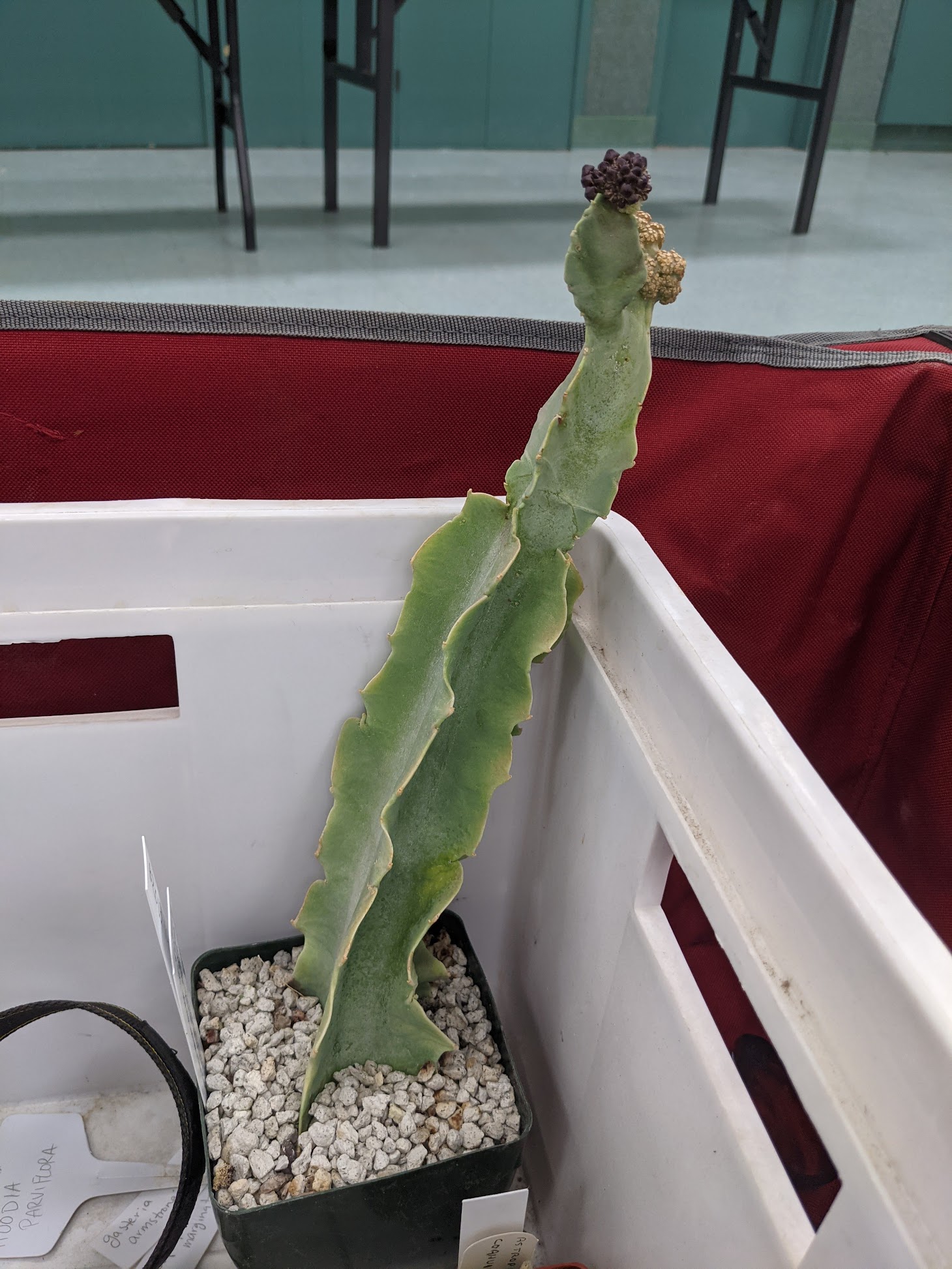
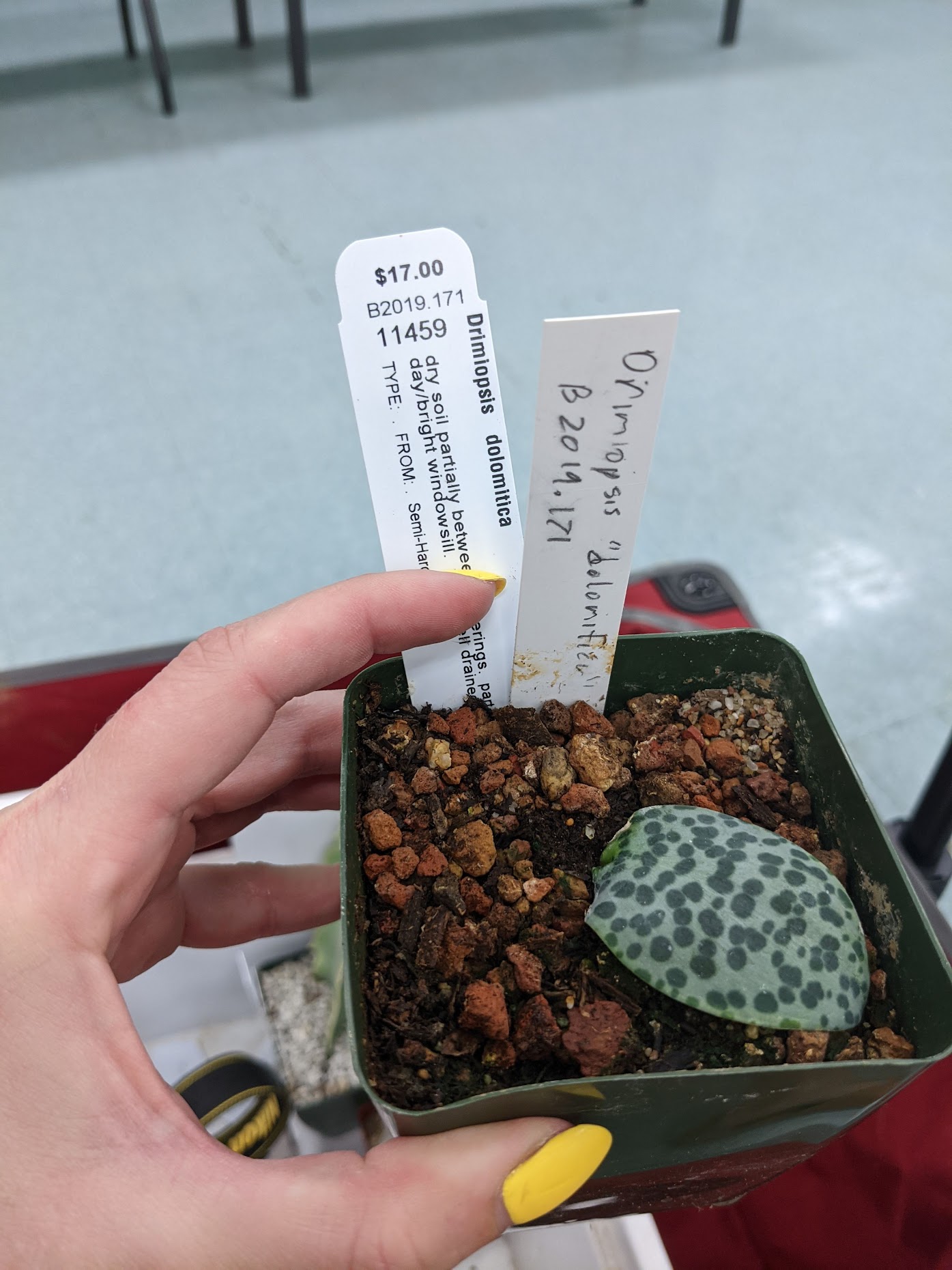
Another score was this Drimiopsis, a rare relative of the ledebouria that has beautiful, spotted velvety leaves. This was labeled Drimiopsis dolomitica, but Google assures me it should be D. dolomiticus. This particular variety has the collection site notation on it for the original plant this came from, so when it does get formally added to the Pacific Bulb Society website, hopefully I can match it to what their more experienced group describes.
Similar to a ledebouria, they are bulbs that produce little sprays of flowers, slowly clustering over time. I find the leaves absolutely beautiful, and I’m cautiously optimistic that with how well I’ve done with ledebouria, I’ll be able to succeed with these too.
Astrophytum coahuilense is a hard to find and narrowly distributed cousin of Astrophytum myriostigma, looking extremely similar in body appearance. When they flower, however, the flowers, fruit, and seeds all much more closely resemble Astrophytum capricorne, making them pleasant little surprises in the greenhouse.
When you cross pollinate an A. coahuilense with a myriostigma, the resulting fruits are usually sterile – so they don’t hybridize despite their similarity.
This is my second coahuilense, and I’m hopeful in a year or two I’ll have them flowering and producing seed for me!
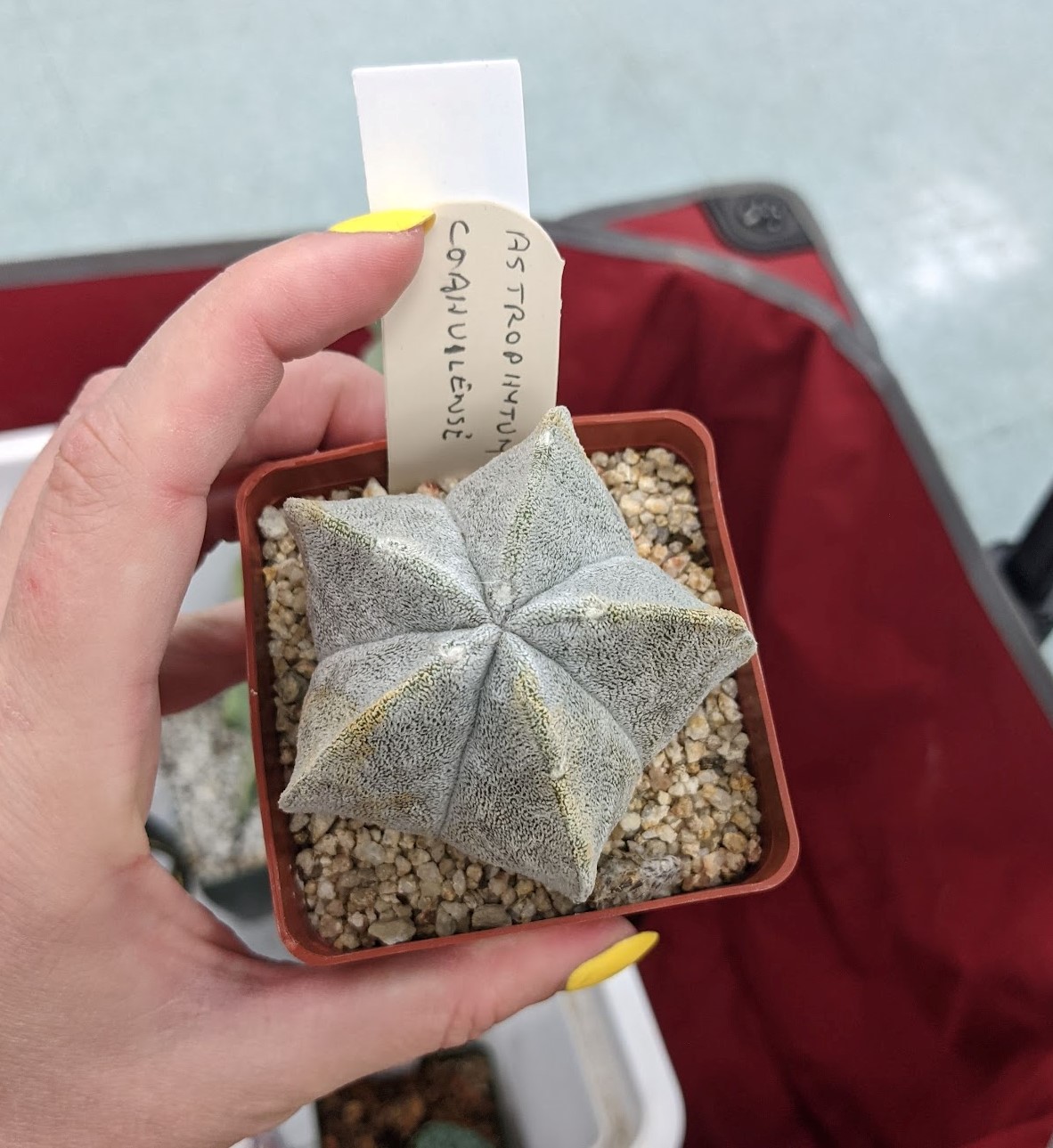
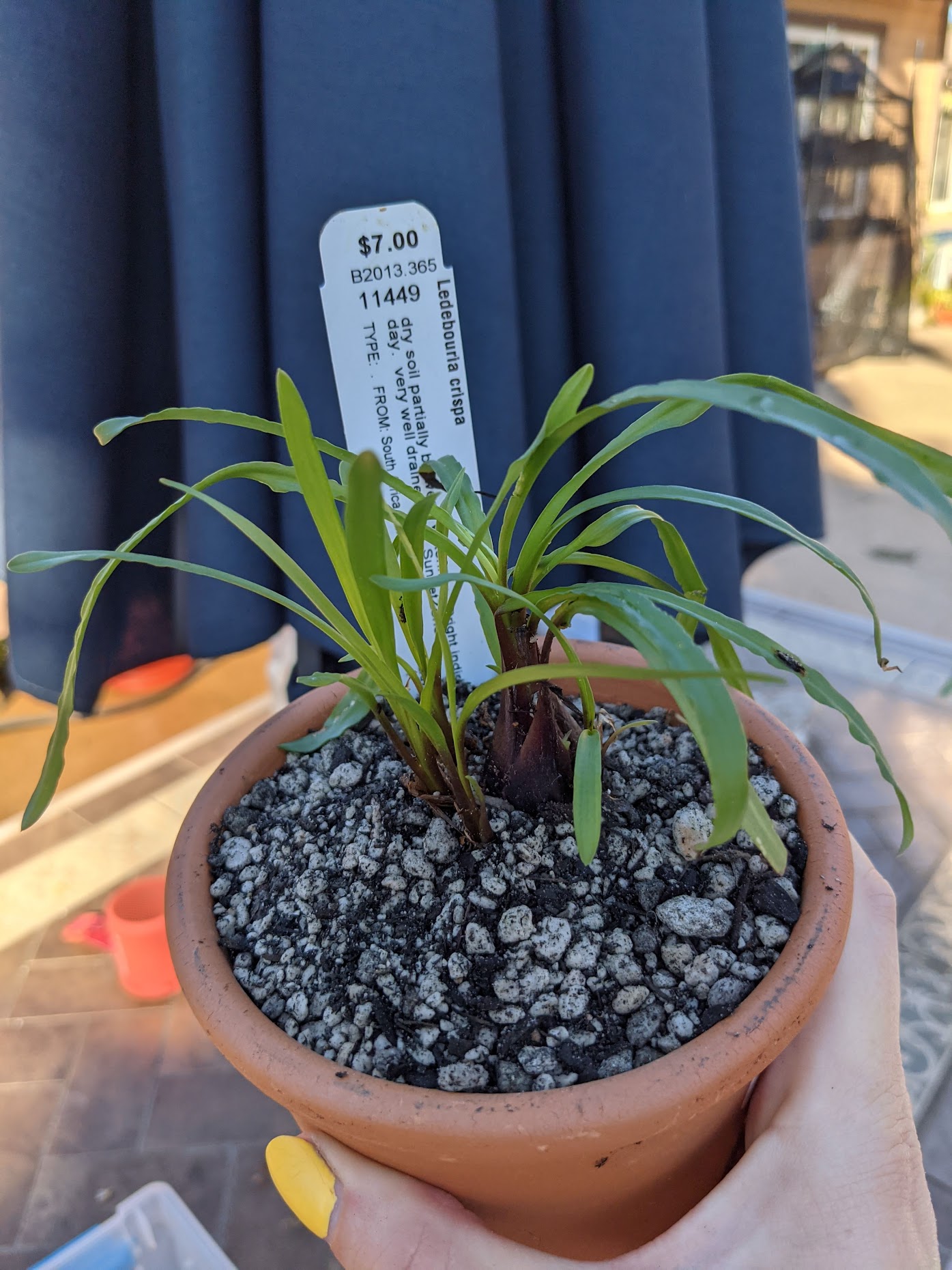
I originally was only grabbing the three plants above, but when I realized that Ernesto had brought all these plants from his conservatory, I went back for more!
This little Ledebouria crispa is another species to add to my growing list of ledebourias; I have 6 distinct types/species now! They are so easy to grow and clump so nicely it’s hard to not keep grabbing them.
I also picked up a little Huernia schneideriana, or “Red Dragon Flower”!
It’s a dense little plant that looks recently chopped/propped, but I’m hopeful I might still see a flower this season as they are winter growers.
All in all, the meeting was a wonderful success and a great time. The club will be having a modified version of our usual holiday party for the December meeting, with a silent auction and cookie exchange rather than the usual raffle and plant swap.
I’d attended meetings very occasionally before COVID, but it was really during lockdown that I became a truly invested member – and now that meetings are resuming in person again, I’m genuinely looking forward to continuing to attend! If you’re able to join your local club, I highly recommend it.
And if you’re in San Diego, join our club and come say hi! Learn more and submit a membership application directly on the club website.

